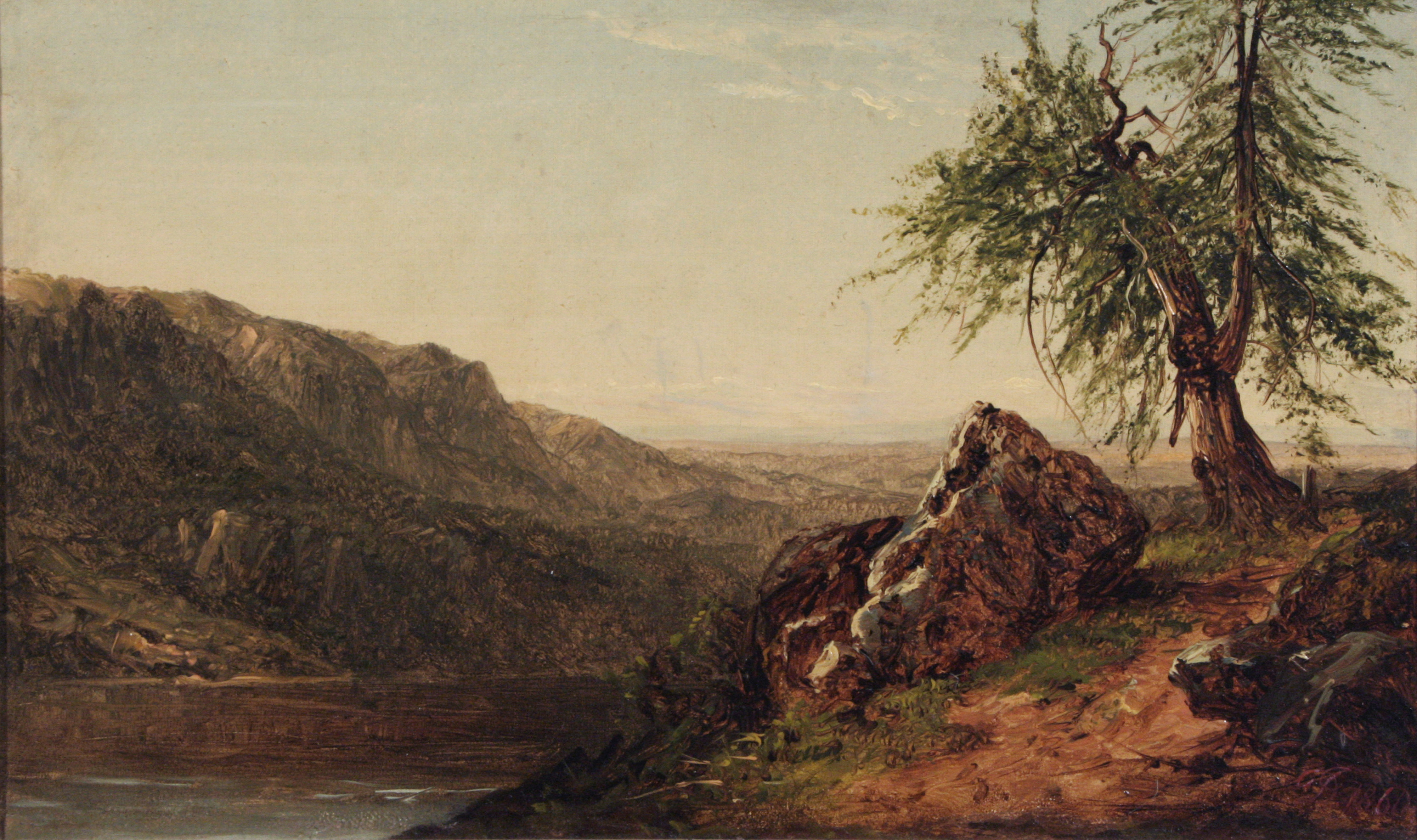Representing the American landscape around the time of the Civil War posed a major challenge to artists working in the mid-19th century. The University of Virginia's Fralin Museum of Art will explore their responses to this dilemma in "The Valley of the Shadow: Landscapes in the Time of the Civil War," which opens Aug. 31 and runs through Dec. 16.
While artists such as those associated with the Hudson River School expressed a vision of American nature that was breathtakingly beautiful and that evoked an image of the potential for expansion and development that remains powerful today, the actual American landscape they knew was fraught with political and social tensions and defined by unprecedented change.
The seaboard regions of the Northern states were rapidly industrializing, while the plantation society of the South depended on the inhumane bondage of more people than ever before, bringing the problem of slavery increasingly into the national spotlight.
The exhibition addresses a central problem faced by painters of the American landscape in the mid-19th century: How to represent a national land that was, in actuality, hotly contested by different groups, increasingly divided by political tensions and that by 1860s became the site of unprecedented violence and trauma.
"The message conveyed by these works," said Bruce Boucher, director of the Fralin Museum of Art, "is one of hope even as our national collective memory was being transformed through the carnage of war."
The exhibition considers the myriad ways in which artists of the period grappled with the vexing problem of representing a nation at war. Images by Frederic Church, Thomas Cole, Sanford Robinson Gifford, David Johnson, John Frederick Kensett, Aaron Draper Shattuck and others contextualize the questions and challenges faced by American landscapists. Their works are supplemented with photographs by Mathew Brady and a lithograph by Currier & Ives, on loan from U.Va.'s Special Collections Library – images that engage the war and the bloodshed that resulted in a more direct manner.
The exhibition demonstrates that American landscapes of the mid-19th century are as notable for what they did not depict as for what they showed, and that the vision of America they articulated and imagined remains powerful today.
A catalog by Jill Baskin, former Luzak-Lindner Graduate Fellow at the museum and Ph.D. candidate in art history, and Margaret Stenz, noted independent scholar and former curatorial associate in American Art at the Brooklyn Museum, accompanies the exhibit.
In conjunction with the exhibition, Maurie McInnis an art history professor in U.Va.'s College of Arts & Sciences, will give a Lunchtime Talk on Sept. 11 at noon. Museum director Bruce Boucher will give a Saturday Special Tour of the exhibit on Nov. 24, from 2-3 p.m.
The museum, located at 150 Rugby Road, one block from the Rotunda, is open Tuesdays through Sundays, from noon to 5 p.m.
Museum programming is made possible by the support of The Joseph and Robert Cornell Memorial Foundation. The exhibition is made possible through the support of Ted Cooper of Adams Davidson Galleries, the Thaw Charitable Trust on behalf of Nicholas Acquavella, Albemarle Magazine, Ivy Publications LLC's Charlottesville Welcome Book, The Hook and an anonymous donor.
Media Contact
Article Information
August 8, 2012
/content/valley-shadow-american-landscapes-time-civil-war-opens-aug-31-uvas-fralin-museum-art

